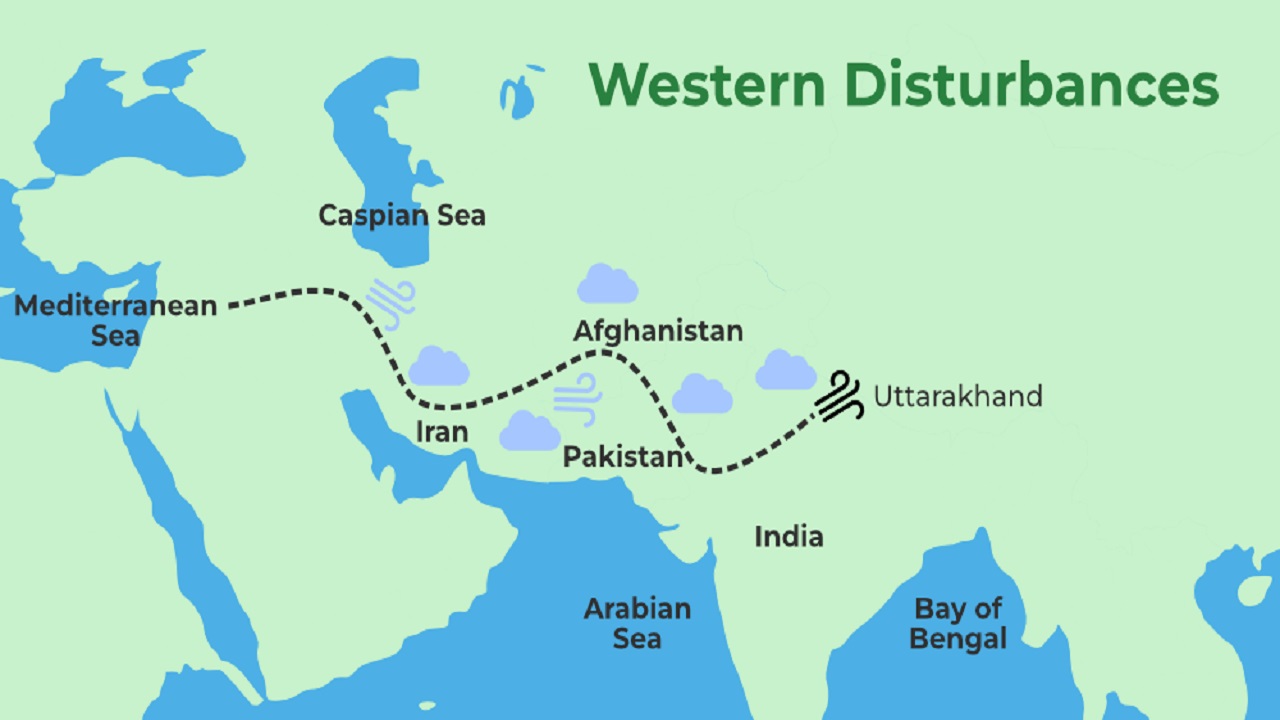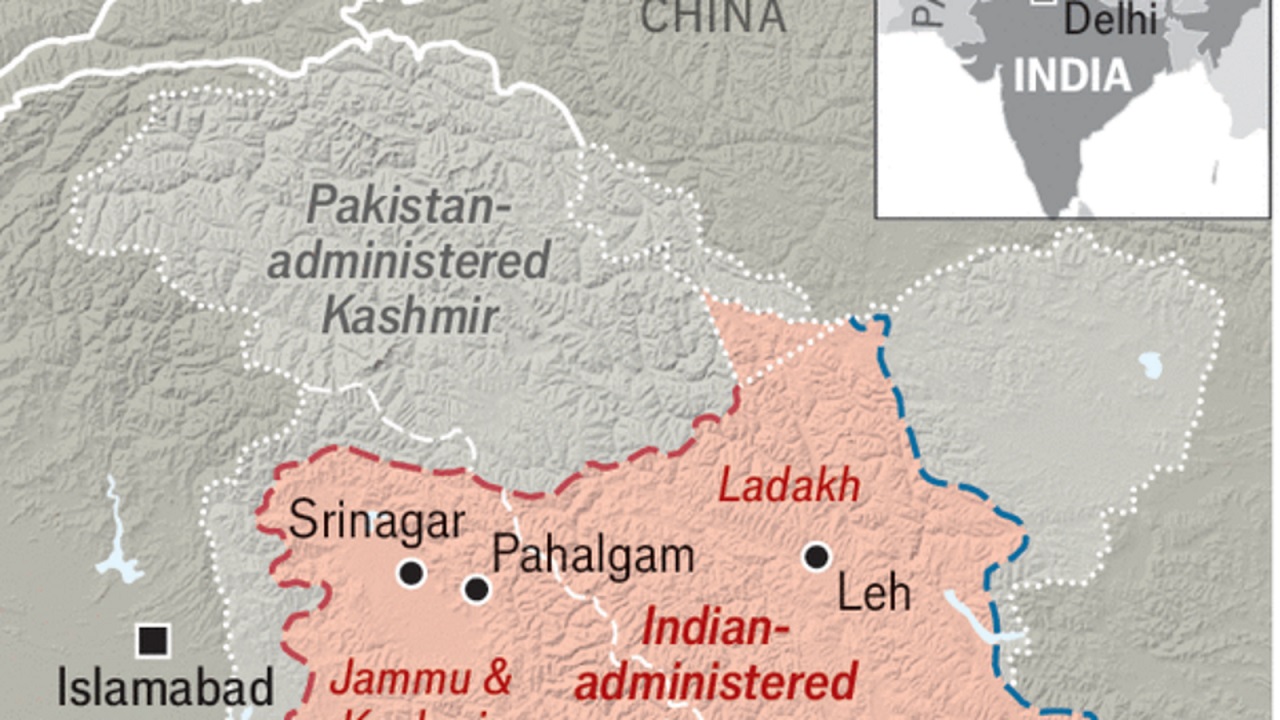Western Disturbance
Context:
A recent Western Disturbance (WD) brought fresh snowfall to Kashmir and widespread rain across Delhi, Rajasthan, Punjab, and Haryana. Weather experts observed that this disturbance was more intense than initially predicted, significantly impacting weather conditions in the region.
What is a Western Disturbance (WD)?
A Western Disturbance is an extra-tropical storm originating in the Mediterranean region, characterized by its movement from west to east. These systems are crucial for South Asia’s winter weather and are carried towards the region by the subtropical westerly jet stream.
Formation and Origin of Western Disturbance
- Regions of Origin:
- Develops over the Mediterranean Sea, Caspian Sea, or Black Sea.
- Formation Mechanism:
- Begins as a low-pressure system with an associated upper-air cyclonic circulation.
- Movement:
- Travels eastward, influenced by the jet stream, entering India through the northwestern regions.
- Seasonality:
- Most active during the winter months (November to March) but can occasionally occur during other seasons.
Regions Affected by Western Disturbances
- Northwestern India:
- States like Punjab, Haryana, Rajasthan, and Western Uttar Pradesh.
- Himalayan States:
- Himachal Pradesh, Uttarakhand, and Jammu & Kashmir.
- Extended Influence:
- Sometimes impacts central and eastern India, depending on the intensity and interaction with local weather systems.
Weather Impacts of Western Disturbances
1. Rainfall and Snowfall:
- Northwestern Plains:
- Causes winter rainfall, which is critical for replenishing soil moisture.
- Himalayan Region:
- Triggers fresh snowfall, vital for maintaining glacial health and replenishing water reserves.
2. Temperature Effects:
- Daytime Temperatures:
- Decreases due to cloud cover and rain, reducing solar radiation.
- Nighttime Temperatures:
- Increases slightly as clouds trap terrestrial radiation, acting as an insulating blanket.
3. Interaction with Local Weather Systems:
- When Western Disturbances interact with moist easterly winds originating from the Bay of Bengal, the combination intensifies, resulting in widespread and heavier precipitation.
4. Agricultural Significance:
- Provides essential moisture for Rabi crops like wheat and mustard.
- Helps improve soil fertility and crop yield, supporting the winter agricultural cycle.
5. Disruptive Effects:
- Flash Floods:
- Sudden heavy rainfall can overwhelm drainage systems.
- Landslides and Avalanches:
- Common in mountainous regions, posing risks to life and property.
Significance of the Recent Western Disturbance
The recent WD was more intense than initially predicted, causing:
- Fresh snowfall in Kashmir, vital for sustaining the region’s glacial ecosystems.
- Widespread rain across northern states, replenishing groundwater and aiding winter agriculture.
- Temperature fluctuations, with cooler days and slightly warmer nights.
This event underscores the need for accurate weather forecasting and preparedness, as Western Disturbances are critical yet unpredictable components of India’s winter climate.
Conclusion:
Western Disturbances play a pivotal role in shaping the winter weather of northern India, contributing to agriculture, water reserves, and regional climate dynamics. While beneficial in many aspects, they can also bring disruptive weather events like landslides and flash floods. Understanding their behavior and impacts is crucial for weather preparedness and mitigating potential risks. This recent event highlights both the advantages and challenges posed by Western Disturbances in the region.




Comments (0)